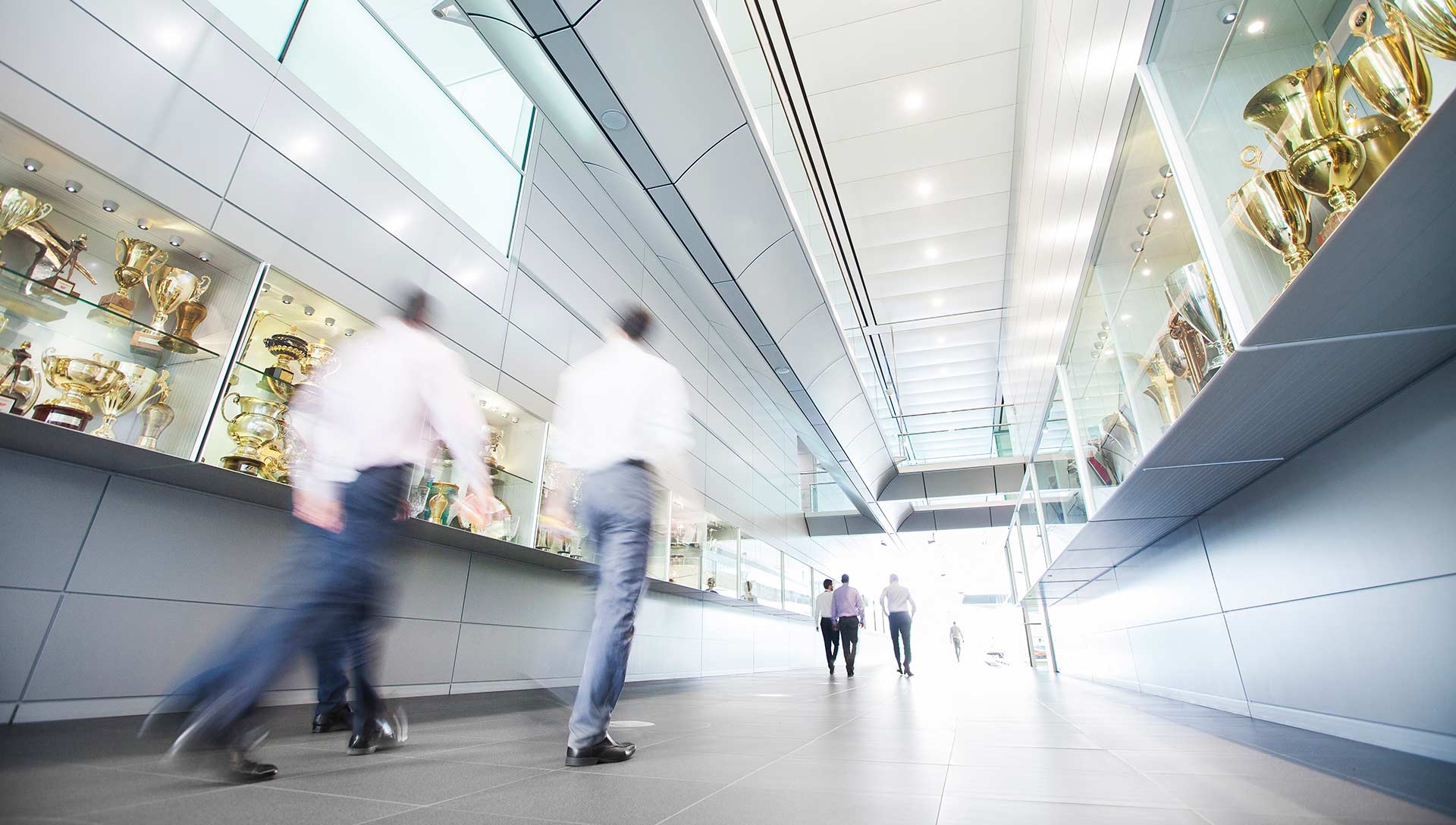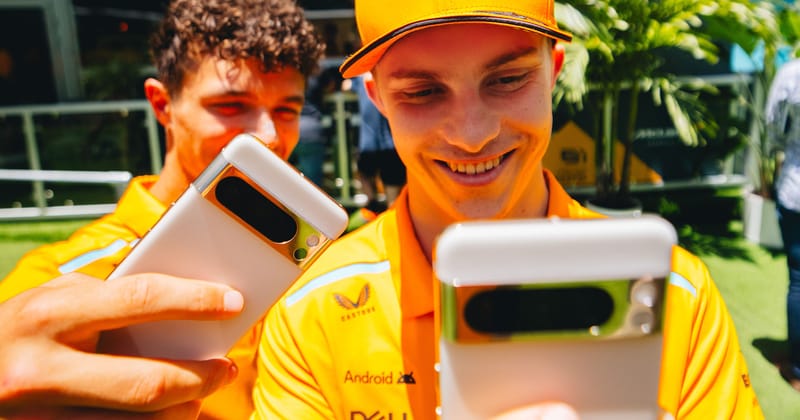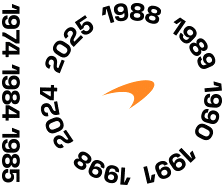
Why are McLAREN running a camo livery?
Our 2025 Formula 1 car, the MCL39, was sporting a one-off camouflage design as we took it for a spin around Silverstone
Pre-season is a strange time for Formula 1 teams. In the lead-up to a new season, you’re trying to build hype and generate excitement whilst simultaneously attempting to give away as little detail as possible.
You want to create a buzz amongst your fans and drum up visibility for your partners, but you don’t want to reveal any secrets, whether you’ve opted for a new design direction or stuck with the tried and trusted. And no one wants to reveal how quick they actually are until they begin setting lap times in Qualifying. Hence why sandbagging - in which teams make their cars seem slower than they are - and glory runs - in which teams make themselves look faster than they are - remain somewhat prevalent in pre-season testing.
This is why, when the MCL39 drove out of the garage for the first time on Thursday at Silverstone as part of a regulated pre-season filming day, it was sporting a rather different look.

Is this the McLaren livery for the 2025 Formula 1 season?
Let’s get this one out of the way nice and early - no, we won’t be using a camo livery for the 2025 Formula 1 season. This design is a one-off and will only be used for today’s filming day at Silverstone.
So, why are McLaren running a camo livery, and when will the 2025 car be revealed?
We’re gearing up for F1’s exciting all-team season launch at The O2 on 18 February, where we’ll reveal our new livery to the world for the first time live on stage.
In the lead-up to the first-of-its-kind event, we wanted to give our fans a taster of what to expect from the MCL39, without spoiling the surprise ahead of F1®75 Live. So, to begin to build hype around the new season - and to give our Marketing team a head start on their content creation plans for the year - we devised a plan to show off the MCL39, without showing off the MCL39…
In the wild ⚡️#McLaren #F1 pic.twitter.com/LEXMrKWiaK
— McLaren (@McLarenF1) February 13, 2025
Of course, we could have used last year’s livery, or we could have sent out a car without any wrapping at all, but both would have made it easy to spot any changes to the car’s design (of which we will neither confirm nor deny). Running without a livery would have made it easy to analyse the car, whilst an older one would have led to side-by-side comparisons.
So instead, we created a one-off papaya-coloured camouflage wrap for the new car. “We just tried to have fun with it, we wanted to be disruptive,” says Creative Director Ed Sullivan. “But essentially, it’s a performance-based wrap to hide the shapes of the car.”
“It's what they call dazzle camouflage,” Design Senior Specialist Simon Dibley adds. Dazzle camouflage dates back to the First and Second World Wars, when it was used as a paint scheme on ships by the navy because it made it difficult to judge their speed, size and in what direction they were heading. A form of this has since been adopted by F1 as a way to mask elements of a car’s design.
The finer details
What are the benefits of running a camo livery?
Of course, it’s not foolproof, but dazzle camouflage does make it more difficult to spy on cars - which even at a filming day, is a very real possibility - giving us freedom to very briefly capture the car running on track, without making its design elements obvious. This allowed us to film and photograph the MCL39 in its limited-edition livery for fans to see, whilst also banking content.
Ed and Simon worked closely with the Vehicle Design/Aero teams on the design of the camo livery, aligning on which areas of the car were most sensitive and the most effective way of obscuring them. The materials used were also tested by Surface & Brand to make sure the print and application of the vinyl wouldn’t impact performance.
"It will hopefully confuse people," says Ed. "Diverting attention away from our car’s actual performance areas."
The geometric pattern used on the MCL39, and its placement, distort the car's appearance, reducing its contrast and making the edges and curves difficult to capture on a camera and challenging for the naked eye to identify properly.
Every section of the car, including the rear wing, the front wing, the nose and everything in between, has been individually designed and mapped out, as opposed to the team creating the design first and fitting it to the car afterwards. And each side of the car is different, instead of the two sides being symmetrical, as they normally would be. Again, making it harder to pick out individual elements because the car looks different from every angle.

Is there anything camouflaged within the camouflage?
An excellent question! It wouldn’t be a McLaren livery without a few Easter eggs hidden throughout the car’s livery. This includes the car’s name, the season it will be used in, and both driver numbers, but also nods to our Triple Crown victories and the year in which McLaren Racing was founded.
Should we dress up for the occasion?
You absolutely should. To celebrate our team’s hard work and satisfy your cravings for some pre-season wardrobe additions, we have released a camo-inspire range, which includes a limited-edition T-shirt and a hoodie that will camo-plete any outfit. Don’t take our word for it, camo and see it for yourself here (if you can).
Disclaimer: A camo range probably isn’t the one to wear if you want to stand out from the crowd.

Blend in with our new camo range
We need even more McLaren, so what else is coming up?
Plenty more is on the horizon, don’t you worry your little papaya heads. Having now successfully fired up and ran the car for the first time, it’s nearly time to reveal our actual livery for the year. The MCL39 will be unveiled in full for the first time at The O2 on 18 February as part of F1®75 Live, before we head off for pre-season testing at the Bahrain International Circuit on 26-28 February.
After three days of warm weather testing, we’ll then have two weeks to prepare for the season opener in Australia, 14-16 March.
Related articles

LISTEN: Firing up our 2025 Formula 1 car

Hear from Lando and Oscar after they hit the track for the first time this year

McLaren Racing unveils title challenger for 2025 FIA Formula 1 World Championship

WATCH: A winning season

McLaren Formula 1 Team extends contract of Peter Prodromou

McLaren Racing announces Allwyn as an Official Partner of the McLaren Formula 1 Team

How the new McLaren Racing Composite factory elevated our team culture







